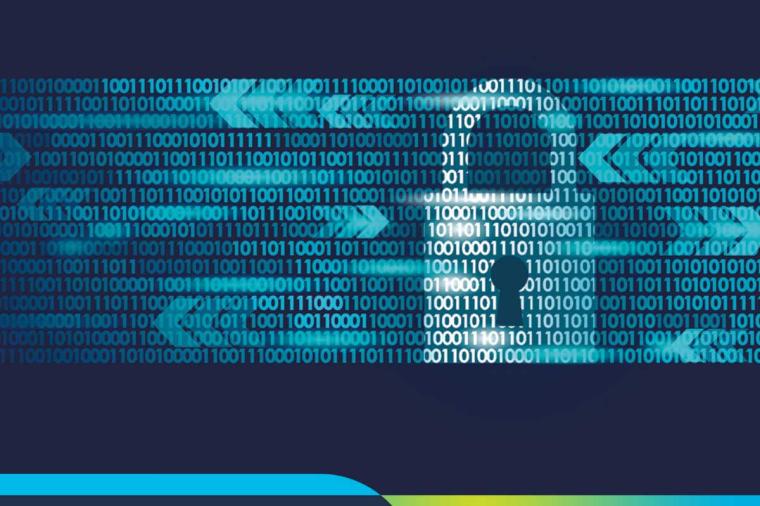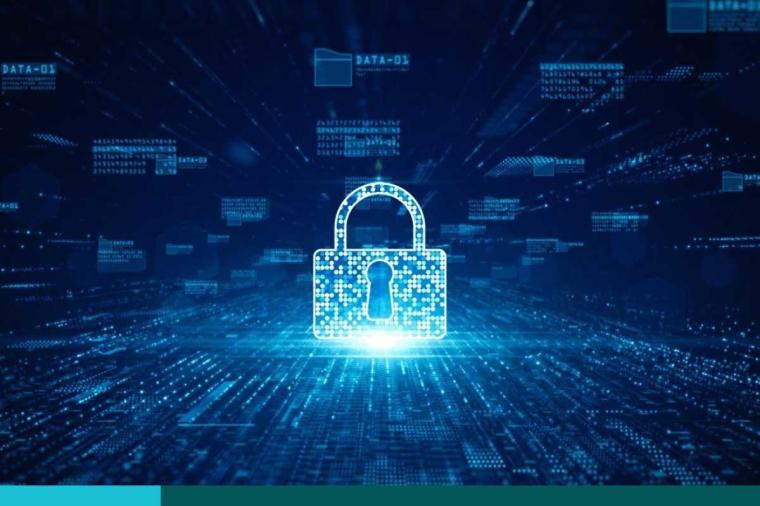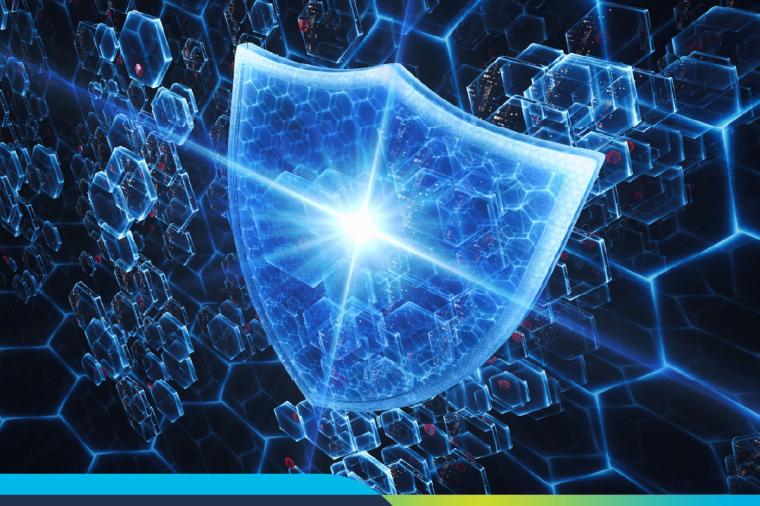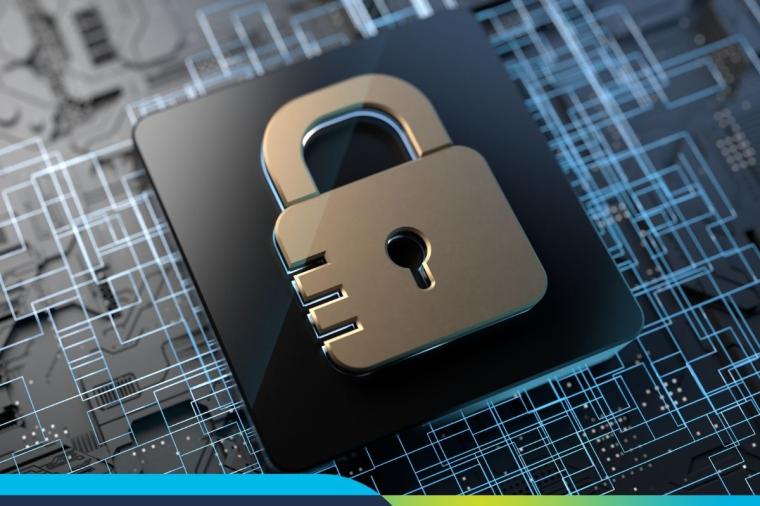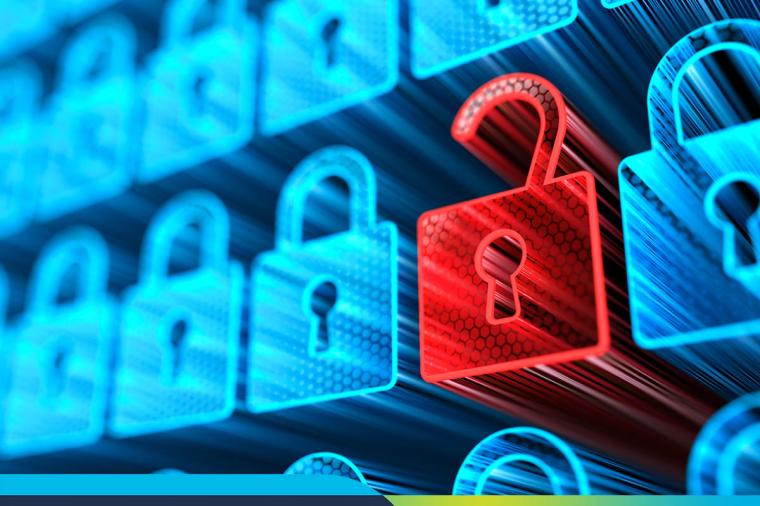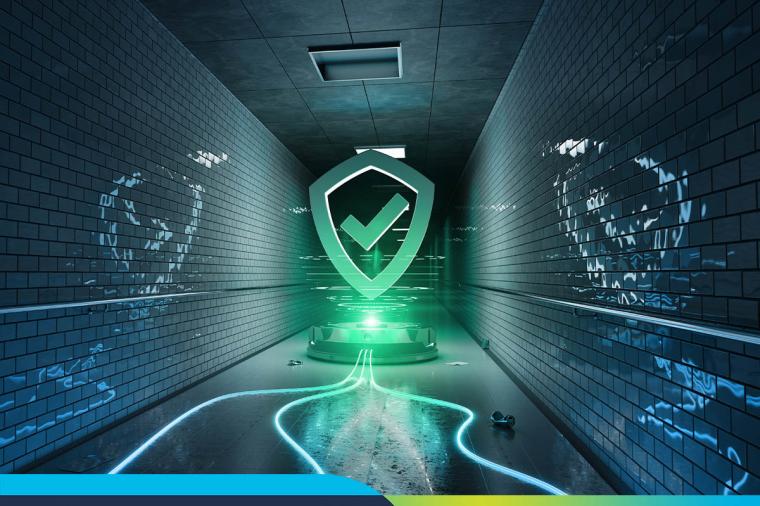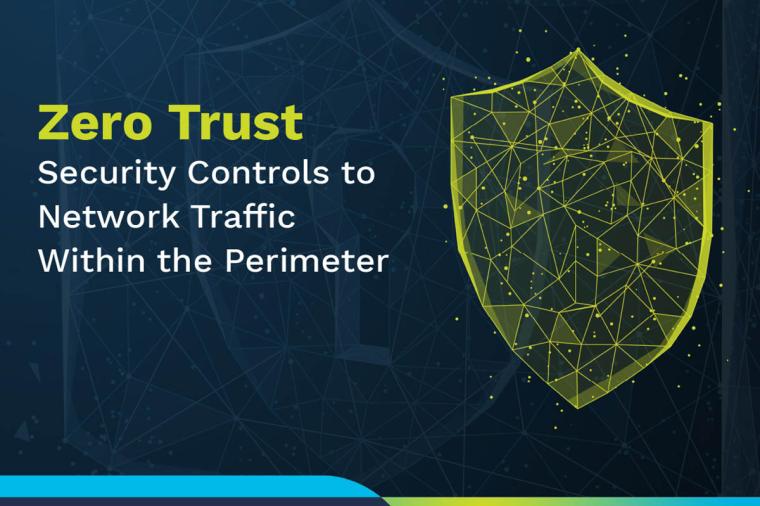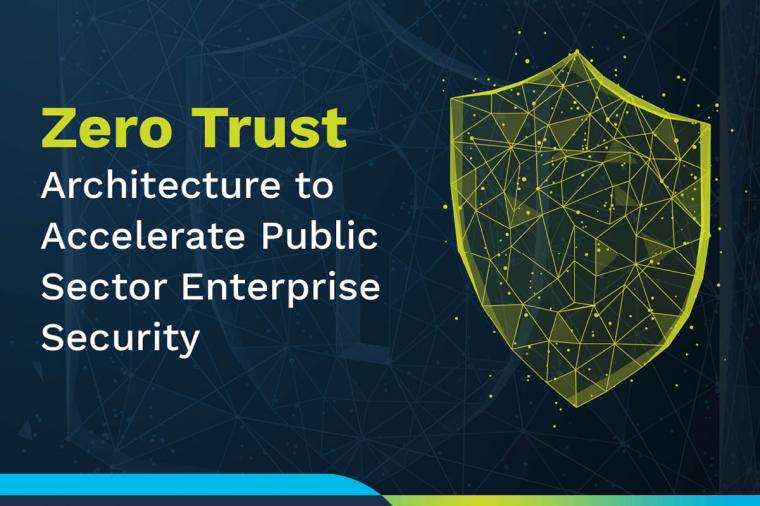Security Back to Basics - Part 3a (Managing the Threat)
In previous blogs we talked about needing to educate the end users and knowing the details of what activity is occurring on your enterprise’s systems. In part 3, we’re going to talk about managing the threats that occur with a layered approach.
Good security doesn’t stop at the endpoint with just an antivirus client (link to symc sep), it doesn’t stop with just a perimeter firewall. It starts with good knowledge of your environment, and grows out to each layer (Network, Endpoints, Client Hardware, Storage, etc) we’ll talk about each one in the next paragraphs.
Starting from the lowest layer of the endpoint, we look at endpoint encryption. For an increasingly mobile workforce the need to secure the data that is located on their removable storage devices and local disks. Using a product such as Symantec’s Endpoint Encryption or their recent acquisition of PGP you can securely protect the physical bits and bytes on disks. An example of this is a contactor or high level employee running to a meeting or airport. This person goes through the standard security procedures like taking off their shoes, putting their laptop in a bin to be X-rayed, then picking up his bag but not his laptop. This laptop can contain anything from personally identifiable information like employee social security numbers, addresses, confidential data or credit card numbers. Encrypting the whole disk and any removable devices helps to add the protection from having that data compromised.
The next layer of the stack is Endpoint Protection. This is your traditional antivirus and network IPS product that protects the endpoint from viruses, malware, and malicious traffic. This has been a key component of security in enterprises for over 25 years. Over the years as threats have gotten increasingly more complicated and sophisticated, the products that protect against them have also become more sophisticated. Where even 5 years ago antivirus was maybe just good enough, now Endpoint Protection products include IPS at the network layer, firewalls, device control, and application control. These protect the client from malware that exploits known vulnerabilities in products like Microsoft Windows and Adobe Acrobat. Performance of the clients have also increased significantly as well.
In next month’s blog we’ll be talking about Compliance and Endpoint Management. Two months from now, we’ll talk about the Network layers with Network Access Control and Email/Web Security.
Related Blog Posts
Cybersecurity, Federal Government, Market Intelligence, State & Local Government
The 2024 United States presidential election is rapidly approaching, and state and local governments are focusing their efforts on bolstering election security and ensuring the proper safeguards are in place.
Yvonne Maffia
Cloud Computing, Cybersecurity, Market Intelligence
Originally passed in 2014, the Federal Information Technology Acquisition Reform Act (FITARA) was designed to improve the management of all-things-IT across federal agencies. It essentially realigned how the government purchases and updates its technology, with an aim at grading agencies based on their ability to adhere to and improve on the following categories:
Susanna Patten
Cloud Computing, Cybersecurity, Education, Market Intelligence, State & Local Government, Technology
The annual EDUCAUSE conference highlighted higher education technology trends, goals, challenges, and how to identify a way ahead for higher education institutions to be successful in today’s modern world.
Yvonne Maffia
Cybersecurity, Education, Federal Government, Market Intelligence, Technology
Over the last few months, there have been several recent cybersecurity initiatives at the federal level, aimed at bridging gaps in K-12 cybersecurity policy and strategy.
Yvonne Maffia
Cloud Computing, Cybersecurity, Market Intelligence
The Air Force hosts an annual summit known as Department of the Air Force Information Technology and Cyberpower (DAFITC) in Montgomery, Alabama, right next to Maxwell Air Force Base. It’s an opportunity for Guardians, Airmen, academics, and IT industry to come together to discuss pain point remedies and high-level plans and strategies. It is also an opportunity for branch heads to strike deals that lead to the adoption of modern and effective systems, meant to enable air superiority. Ms.
Kevin Shaker
Cybersecurity, Internet of Things, IT Infrastructure, Market Intelligence
IoT and Its Impact on Infrastructure and Governance
The Internet of Things (IoT) revolutionizes how governments, organizations, and citizens interact with the physical world. This wave of interconnected devices promises a transformative infrastructure and governmental operations shift. However as the reach of IoT grows, the implications — especially related to security — become even more profound.
Dawit Blackwell
Cybersecurity, Federal Government, Market Intelligence, Technology
The Department of Navy (DON) recently held its annual WEST Conference, this year with a strong emphasis on cybersecurity. The conference brought together key decision-makers from the Navy, Marine Corps, and Coast Guard, along with experts from various industries and government officials. The discussions were broad-ranging, covering topics related to naval warfare, technology, innovation, and cybersecurity.
Toan Le
Cybersecurity, Market Intelligence, State & Local Government
2022 was a noteworthy year for the technology sector, particularly as it relates to cybersecurity. The post-pandemic era of modernization exposed the fragility of U.S. public sector technology infrastructure and systems, widening attack surfaces and posing additional challenges for state, local and education leaders. We have witnessed the whole gamut of continually evolving security threats, ranging from election security breaches, nation-state actors, threats to critical infrastructure, ransomware attacks, hacktivism and more.
Yvonne Maffia
Cloud Computing, Cybersecurity, Education, Federal Government, IT Infrastructure, State & Local Government, Technology
The Cybersecurity and Infrastructure Security Agency (CISA) has seen increased malicious activity with ransomware attacks against K 12 educational institutions. Malicious cyber actors target school computer systems, slowing access, and rendering the systems inaccessible to essential functions, including remote learning. In some instances, ransomware actors stole and threatened to leak confidential student data unless institutions paid a ransom.
Ransomware attacks on US government organizations cost $18.9bn in 2020.
Asad Zaman
Cloud Computing, Cybersecurity, Federal Government, State & Local Government, Technology, Tips and How-Tos
TD Synnex Public Sector’s Chief Cybersecurity Technologist, Don Maclean sat down with Mark Guntrip, Senior Director of Security Strategy at Menlo Security, to discuss one of the latest emergent security threats.
James Hofsiss
Cybersecurity, Market Intelligence, Technology
“We must find fresh ways to connect forces, allies, and partners that provide an effective response to the challenge of a highly contested environment not seen in the last 20 years. Given the challenges we face today and in the future, we simply have no choice but to become more interoperable,” said General CQ Brown JR., U.S. Air Force Chief.
Toan Le
Cybersecurity
Cybersecurity Maturity Model Certification (CMMC) 2.0 is here. If your company is not prepared, the time to get ready is now, or your company may risk losing business with the Department of Defense (DoD).
The CMMC program requires cyber protection standards for companies in the Defense Industrial Base (DIB) and aims to protect sensitive unclassified information that the DoD shares with contractors and subcontractors.
Don Maclean
Cloud Computing, Cybersecurity, Technology, Tips and How-Tos
Every year, there are more and more security breaches, and it gets harder and harder to spot them. According to a leading cybersecurity vendor1, it takes almost seven months for organizations to find breaches, which gives malicious attackers plenty of time to get what they want.
Most often, system misconfigurations like default settings or credentials leave the door wide open for exploitation, resulting in these breaches. As organizations grow, this problem only gets worse because quick changes frequently result in skipped steps.
Heather Sweet
Cloud Computing, Cybersecurity, Technology, Tips and How-Tos, Training
Security is paramount in the digital age, especially when it comes to keeping networks secure. Having network security monitoring services stand between your organization and malicious attackers is crucial. Still, the volume of alerts and issues that come with them can easily overwhelm your team.
The volume of these alerts is rising every year too. According to a report by TrendMicro, 54% of teams surveyed felt like they were drowning in alerts, and 27% said they spent most of their time dealing with false positives.
Heather Sweet
Application Lifecycle, Cybersecurity, DevSecOps
Implementing zero trust may seem daunting, but it is also an opportunity to integrate more secure coding practices into your software applications from the start. Zero-trust security assumes that all traffic on your internal network is potentially malicious. Consequently, it requires taking measures to:
Don Maclean
Cybersecurity, Federal Government
The rise in a remote workforce and use of cloud-enabled business applications equates to the browser essentially becoming our office, providing access to all necessary tools, data, and communications. Threat actors understand this paradigm shift and are now utilizing Highly Evasive Adaptive Threats (HEAT) to initiate ransomware, extortion ware, and other endpoint intrusions.
HEAT attacks are the next generation of cyber threats.
Menlo Security
Cloud Computing, Cybersecurity, Technology, Tips and How-Tos
The digital landscape evolves fast, and attackers are even faster. New ways to attack systems and organizations appear every day, and traditional methods are starting to fall behind the times.
Highly Evasive Adaptive Threats (HEAT) are the newest step in the digital world for malicious attackers. These attacks are unlike anything security experts have seen before and lead to some of the most devastating breaches ever seen.
In this article, we’ll explain how HEAT attacks impact companies worldwide and how Menlo Security’s Isolation Core can help protect your organization.
Heather Sweet
Big Data & Analytics, Cybersecurity, Market Intelligence
In a recent webinar produced by Federal News Network, the Director of the Environmental Protection Agency (EPA)’s Office of Information Security and Privacy, Tonya Manning, detailed the state of the agency’s zero trust and data handling postures, as well as its latest priorities. We’ll spotlight several takeaways and look at what’s to likely come down the pike for the EPA in the coming months and years.
Zero Trust Architecture
Susanna Patten
Cloud Computing, Cybersecurity, Technology, Tips and How-Tos
The term "Integrated Management Workplace System" (IWMS) was first used by Gartner in 2004 to refer to a program that could manage and integrate all business and workplace requirements into a single, centralized solution. Since then, a number of solutions have emerged with the aim of bringing together various operational and organizational areas that had previously tended to operate in isolation from one another.
Heather Sweet
Cybersecurity, Federal Government, State & Local Government
This is the second post in the Threat-Based Methodology series. The first post introduced Threat-Based Methodology and the analysis conducted by the FedRAMP PMO and NIST. That post concluded with a list of the top seven controls based on their Protection Value. This post will explore CM-6 in greater depth and explain how Devo supports the ability to meet this control.
John Allison
Cloud Computing, Cybersecurity, Technology
The development world has changed, and organizations are still adapting to developing in the cloud. Cloud native technology and containers are now at the forefront of software development, meaning that software no longer exists and operates locally. However, despite these quick advancements, cloud native application security still lags behind.
This article will cover how you should approach cloud native application security and why Snyk is the best solution for your needs.
Adam Fyffe
Cybersecurity, Education, Federal Government, State & Local Government
This three-part blog series will explore threat-based methodology and how it benefits every company with a network. The series leverages the analysis presented by the Federal Risk and Authorization Management Program (FedRAMP) Program Management Office (PMO) in conjunction with the National Institute of Standards and Technology (NIST).
John Allison
Cybersecurity, Federal Government, IT Infrastructure, Market Intelligence
The heightened threat of retaliatory cyberattacks by Russia against critical U.S. IT infrastructure is prompting federal investments in cybersecurity to strengthen its cyber defense posture. The ongoing conflict in the region and the increased targeting of critical infrastructure assets will cause federal agencies to look for ways to strengthen their cybersecurity posture and redefine requirements that address cyber breaches that may occur during the coming months and years as well as drive investments into Zero Trust related tools and threat intelligence.
Dawit Blackwell
Cloud Computing, Cybersecurity, Federal Government, IT Perspective
Over the last few years, the federal government has begun to embrace a zero trust approach as the new cybersecurity standard for agencies. Utilizing the latest solutions and best practices, the hope is to bolster federal cybersecurity and create a robust and resilient IT infrastructure that can protect and secure networks from attacks and breaches.
Kevin Tierney
Cloud Computing, Cybersecurity, IT Perspective, Technology
Last January, the Office of Management and Budget (OMB) released M-22-09, a memorandum that set forth the federal government strategy on zero trust adoption, in an effort to reinforce the security and protection of government agencies’ critical systems, networks, and IT infrastructures.
David Presgraves
Application Lifecycle, Cloud Computing, Cybersecurity, DevSecOps, Market Intelligence
"We are making progress. This really is not just about technology. This is about changing our processes changing our approach to delivering and operating technology to IT systems and our cyber mechanical warfare systems as we move forward," said Robert Vietmeyer, DoD Director for Cloud and Software Modernization.
Toan Le
Application Lifecycle, Big Data & Analytics, Cloud Computing, Cybersecurity, DevSecOps, IT Infrastructure
For the second year in a row, Gartner named IBM a Leader in Gartner Magic Quadrant for 2021 Cloud Database Management Systems based on its Ability to Execute and Completeness of Vision. With emergence of a single cloud DBMS market, We believe our portfolio of feature-rich, enterprise-tested offerings, bold acquisitions, and partnerships enable our clients to address the unique needs of their business, respond to the growing volume, velocity and variety of today’s data and drive more accurate data driven decisions.
Holly Vatter
Application Lifecycle, Big Data & Analytics, Cloud Computing, Cybersecurity, DevSecOps, IT Infrastructure
This week's roundup of the latest news and insights gathered from IBM's Government Research Institute thought leaders:
Michael J. Keegan
Cloud, Cloud Computing, Cybersecurity, Federal Government, Technology
As organizations adapt to hybrid work and more and more cloud services are deployed, new service entities that collaborate and exchange data without human interaction, such as virtual machines and containers, are proliferating. The growth of these service accounts and identities and their increasing volumes of permissions, privileges, and entitlements expose organizations to new attack vectors.
Kevin Tierney
Cybersecurity
Threat Intelligence Report Shows Massive Uptick in DDoS Attacks
NETSCOUT recently released its semi-annual Threat Intelligence Report with deep insights into the notably distributed denial-of-service (DDoS) and cyber activity during the second half of 2021. The report contains troves of valuable information about the ongoing threat posed to organizations across the public and private sectors, including government agencies and other public sector organizations.
Thomas Bienkowski
Cloud Computing, Cybersecurity, Federal Government
The Department of Defense (DoD) is taking major steps to boost cloud performance, with the promise of a tangible, positive impact on military missions throughout the world. Specifically, the Joint Warfighter Cloud Capability (JWCC) contract is replacing the Joint Enterprise Defense Infrastructure (JEDI) initiative, which was intended to establish enterprise-class cloud capabilities for the military community.
Carolyn Ford
Application Lifecycle, Cybersecurity, DevSecOps, Federal Government, IT Perspective, Technology
On the Tech Transforms podcast, sponsored by Dynatrace, we have talked to some of the most prominent influencers shaping critical government technology decisions. From supply chain to machine learning, this podcast explores the way technology advancement intersects with human needs.
In March 2022, we sat down with these government technology visionaries:
Carolyn Ford
Cybersecurity, Federal Government, State & Local Government, Tips and How-Tos
The Ukraine-Russia conflict began when the Russian military invaded Ukraine on February 24.
Yet the cybersecurity and cyber warfare elements of this conflict began before initial combat action. Ukraine was hit with numerous cyberattacks against its government and banking systems in the lead-up to the conflict, with experts blaming Russia for the cyberattacks. And within the first 48 hours, multiple U.S. agencies noted that cyberattacks from suspected hackers in Russia increased by over 800%.
Ron Iasaacson
Cloud Computing, Cybersecurity, DevSecOps, Market Intelligence
"Zero Trust is a cybersecurity strategy and framework that embeds IT security mechanisms throughout an architecture that generate metadata used to secure, manage, and monitor every device user, application, and network transaction at the perimeter and within every network enclave."
From the Department of Defense (DoD) Zero Trust Reference Architecture v1.0
Toan Le
Cloud Computing, Cybersecurity, Federal Government
There has been an increased focus among U.S. government agencies on adapting to modern IT environments and enhancing cybersecurity solutions. This increased focus on security government networks, data, and critical infrastructure is a result of ongoing digital transformation initiatives that are resulting in more mission-critical connected systems and more data for agencies to secure. It’s also a result of the increased number of cyberattacks and more sophisticated cyber-criminals that are targeting our nation’s networks.
Kevin Tierney
Cloud Computing, Cybersecurity, Market Intelligence, State & Local Government
If you have been looking for the right time to sell your technology product or service to the state, local and education (SLED) market, now is the time to act. With thirty-six states beginning their fiscal year on July 1st, now is the time to position yourself to take advantage of a confluence of once-in-a-lifetime conditions that have left the SLED market booming with opportunity. Here are some of the factors driving that opportunity:
New Leadership
Yvonne Maffia
Cybersecurity, Federal Government, Market Intelligence, News
Federal Pain Points and IT Requirements
The latest Federal Information Technology Acquisition Reform Act (FITARA) Scorecard, released in December 2021, highlights how federal agencies are faring across several areas related to IT modernization. The full breakdown from the scorecard is available here. These scorecards are useful to identify where government agencies are struggling and where they are doing well. Consequently, technology vendors and channel partners can use them as a guide for identifying what solutions their customers need.
Dawit Blackwell
Analytics & Data Science, Big Data & Analytics, Cloud Computing, Cybersecurity, Market Intelligence
The COVID-19 pandemic has spurned greater demand for health information technology (IT) by demonstrating the importance of having robust medical research, health surveillance and healthcare systems capable of rapidly responding to new and developing situations, something which requires strong IT investment in big data, cybersecurity and cloud. In addition, both the pandemic and emerging technologies have led to numerous changes within the healthcare industry, such as telehealth expansion and increased use of wearables, which necessitate robust health IT solutions.
Gabriel Zighelboim
Cybersecurity
Zero Trust is a concept gaining significant attention across the federal landscape. The idea isn’t new, and yet the notion of "never trust, always verify" is appearing more and more in memos, solicitations and other federal government announcements. For example, the Office of Management and Budget (OMB) released memo M-22-09, "Moving the U.S. Government Toward Zero Trust Cybersecurity Principles," in late January 2022.
Susanna Patten
Cybersecurity
In view of current events, the Cybersecurity Infrastructure Security Agency (CISA) has noted the increased likelihood of a cybersecurity breach. Their recommendations, listed below, speak mainly to the basics of cybersecurity: foundational practices and technology that protect every enterprise, in both the public and private sector. Below are the key elements (full details are here Shields Up | CISA):
Don Maclean
Cybersecurity
In a Department of Defense (DoD) Town Hall held on February 10, led by David McKeown, DoD’s Senior Information Security Officer and Deputy CISO, we heard some news about CMMC. Defense contractors holding Controlled Unclassified Information (CUI) will need a third-party assessment to obtain certification.
Don Maclean
Cloud Computing, Cybersecurity, Market Intelligence, State & Local Government
On December 8, 2021, the National Association of State Chief Information Officers (NASCIO) released its 2022 annual top 10 priorities list identifying the most pressing technology and policy issues that state CIOs are prioritizing for the upcoming year.
Yvonne Maffia
Cybersecurity, IT Infrastructure, State & Local Government
Adhering closely to the U.S. federal government’s top legislative priorities for 2022, state chief information officers (CIO’s) have once again ranked cybersecurity as their top priority for 2022, following an already established decade-long trend in this direction.
Yvonne Maffia
Business Applications, Cloud Computing, Cybersecurity, Market Intelligence
Recent signals by the U.S. federal government suggest that customer experience (CX), primarily citizen-facing services will receive attention and investment from funding sources like the Technology Modernization Fund (TMF). The initial $311 million awarded by the TMF primarily went to projects focused on cybersecurity in keeping with stated priorities and the prevalence of cybersecurity threats. From the beginning, however, TMF has emphasized CX projects that focus on how taxpayers engage with government services in secure digital environments.
Dawit Blackwell
Big Data & Analytics, Cybersecurity, Market Intelligence
President Joe Biden signed the National Defense Authorization Act (NDAA) for fiscal year 2022 (FY22) into law on December 27, 2021. It authorizes $770 billion in defense spending which is a 5% increase over last year. This marks 61 consecutive years that a bill received bipartisan support from congress (a display of agreement that has become increasingly rare for DC politics).
Toan Le
Big Data & Analytics, Cloud Computing, Cybersecurity
With another busy year behind us, it’s time to look ahead to fiscal year (FY) 2022. The official information technology (IT) budget request is $97B, a 4% increase over FY21, which would be a new record. Of course, those numbers undercount all the IT spending that goes unreported. Furthermore, remaining provisions in the American Rescue Plan, the Technology Modernization Fund and IT provisions in the Infrastructure Bill will represent additional pockets of opportunity worth billions for channel partners and technology vendors.
Lloyd McCoy
Cybersecurity
There are a variety of excellent reasons to use containers. They're more agile and consume fewer resources than virtual machines. They provide more flexibility and security than running applications directly on the OS. They are easy to orchestrate at massive scale using platforms like Kubernetes.
DLT Solutions
Cybersecurity
This time last year, the CrowdStrike Falcon OverWatch™ reported on mounting cyber threats facing organizations as they raced to adopt work-from-home practices and adapt to constraints imposed by the rapidly escalating COVID-19 crisis. Unfortunately, the 12 months that followed have offered little in the way of reprieve for defenders. The past year has been marked by some of the most significant and widespread cyberattacks the world has seen.
DLT Solutions
Cybersecurity
Zero Trust is an approach to network security which assumes that just because something is on your network, doesn’t necessarily mean it is trustworthy. Zero Trust allows organizations to apply security controls to network traffic within the perimeter, not just at the edge.
DLT Solutions
Cybersecurity
Current IT modernization initiatives are challenging federal agencies to implement significant changes to their infrastructure at a breakneck pace. As they look to keep pace with an increasingly sophisticated cyber threat environment and accommodate workflows shifting to the cloud, the federal government is looking to zero trust as a solution. Zero trust is a security model that maintains secure access to data and applications based on dynamic security policies reacting to access request specifics, as opposed to the network from where access originates.
Asad Zaman
































